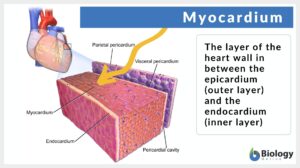Search Results for: visceral
Peritoneum
What is the Peritoneum? The term peritoneum refers to the serous membrane that constitutes the biologically active inner... Read More
First visceral cleft
First visceral cleft --> hyomandibular cleft (Science: anatomy) The cleft between the hyoid and mandibular arches of the... Read More
Visceral cranium
Definition noun The portion of the vertebrate skull derived from the embryonic pharyngeal arches that give rise to mandible,... Read More
Adipose tissue
Adipose Tissue Definition Adipose tissue, a specialized variety of connective tissue, is composed of lipid-rich cells known... Read More
Smooth muscle
The smooth muscle can be described as a type of muscle in the human body that is non-striated and involuntary in action.... Read More
Cranium viscerale
Definition noun Latin term for visceral cranium, the portion of the vertebrate skull derived from the embryonic pharyngeal... Read More
Simple squamous epithelium
Simple Squamous Epithelium Definition Simple squamous epithelium, also known as simple squamous epithelial tissue or... Read More
Splanchnic
Definition adjective Of, pertaining to, relating to, near to, or describing the viscera or entrails;... Read More
Myocardium
Myocardium Definition What is the myocardium of the heart? It is the muscular middle layer of the heart that is... Read More
Hypersensitivity
Hypersensitivity Definition Hypersensitivity is the exaggerated immune response to protect the human from foreign bodies... Read More
Sensory Systems
A sensory system is a part of the nervous system consisting of sensory receptors that receive stimuli from the internal and... Read More
Viscerocranium
Definition noun The portion of the vertebrate skull derived from the embryonic pharyngeal arches that give rise to mandible,... Read More
Dumdum fever
Dumdum fever --> visceral leishmaniasis a chronic disease, occurring in india, Assam, china, the area formerly known as... Read More
Unmyelinated nerve
Definition noun A nerve that is bare or without the myelin sheath around the axon. Supplement The unmyelinated nerve... Read More
Basal lamina
Definition noun (histology) A layer of extracellular matrix found on the basal surface of epithelial cells, and which is... Read More
Black sickness
Black sickness --> visceral leishmaniasis a chronic disease, occurring in india, Assam, china, the area formerly known as... Read More
Unmyelinated neuron
Definition noun A neuron in which there is no myelin sheath surrounding the axon. Supplement The unmyelinated neuron... Read More
Involuntary muscle
A muscle act typically either under the control of the will or without conscious control. Muscles that can be controlled at... Read More
Tuber omentale
tuber omentale An eminence on the visceral surface of the left hepatic lobe to the left of the fossa for the ductus venosus,... Read More
Hyomandibular cleft
Hyomandibular cleft (Science: anatomy) The cleft between the hyoid and mandibular arches of the embryo; the external... Read More
Leishman-donovan bodies
Leishman-donovan bodies small spheres found in the spleen and liver of patients with visceral leishmaniasis. The spheres are... Read More
Lamina ventralis
Lamina ventralis --> basal lamina of neural tube The ventral division of the lateral walls of the neural tube in the embryo;... Read More
Capsular space
Capsular space The slitlike space between the visceral and parietal layers of the capsule of the renal corpuscle; it opens... Read More
Afferent Nerve
Afferent Nerve Definition The word ‘aferent’ means "steering or conducting something towards a destination". The... Read More
Pericardium
pericardium (Science: anatomy) A double membranous sac which envelops and protects the heart. The layer in contact with the... Read More
Direct agglutination
Definition noun (1) An agglutination (macroscopic clumping) caused by one antibody. (2) A serological technique in which... Read More
Vertebrata
vertebrata (Science: zoology) One of the grand divisions of the animal kingdom, comprising all animals that have a backbone... Read More
Air bladder
Air bladder 1. (Science: anatomy) An air sac, sometimes double or variously lobed, in the visceral cavity of many fishes. It... Read More
Respiration
Organization of the Respiratory System Each lung is composed of air sacs called alveoli - the sites of gas exchange with... Read More















